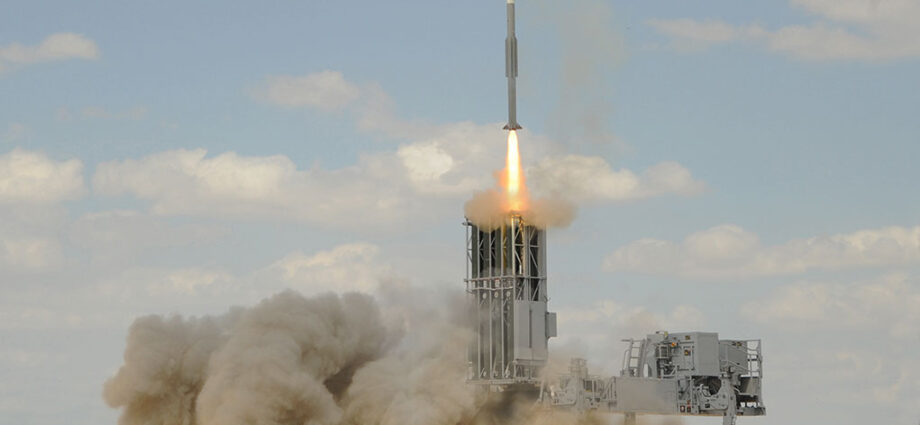The Barak MX Air Defense Systems proposed by Israel’s IAI won high scores in all categories evaluated by the Slovak Ministry of Defense. The Barak will serve as the main building block for Slovakia’s National Air Defense for the Medium and Long Ranges.
Legacy Air Defense Systems
The Armed Forces of the Slovak Republic currently have two types of Soviet anti-aircraft missile systems. These include 3 sets of mobile medium-range anti-aircraft missiles (MRSAM-M) 2K12 KUB introduced in the 80’s and 54 portable very short-range anti-aircraft missile sets (VSHORAD/MANPADS) 9K38 IGLA. Recently, Germany donated two sets of MANTIS C-RAM systems for Slovak use.
The Soviet KUB missiles have already exceeded their designated lifetime, and average approximately only 30% availability. The IGLA missiles lifespan has been extended to April 2025.
Recently Slovakia has seen 4 Patriot missile systems from the US, Netherlands and Germany stationed in the country following the Ukraine war, however these systems are believed to have left the country since, leaving a sole Italian SAMP/T battery. In this context it is also important to note the the Slovak fleet of Mig-29 is also inactive, while surrounding countries have been supporting Slovakia with air policing.
Competing Proposals
Slovakia plans to implement one Mobile MRSAM battery in 2026 and two more in 2028, an addition two in 2029 and complemented by an addition two long range air defense in 2032 and 2035 respectively. In total, 14 missile variants were assessed for this tender and comprehensively evaluated during the evaluation of offers for MRSAM-M systems, which differed in the number of missiles on the launcher, or in the number of launchers and in the delivery of shooting radar compared to the possibility of upgrading and integrating the already acquired ELM-2084 MMR radar.
To that extend the Barak MX missile was the only one to offer 35, 70 and 150 Km versions according to experts, which can be fired from the same cannister, allowing a scalable grow-by-budget options for Slovakia. Another important point evaluated by the committee was the capability to integrate the ELM-2084 MMR radars already purchased by Slovakia. On that point only Rafael and IAI presented a proven integration.
The Barak missile got the highest scores for technical and operational capabilities, as well as for costs and delivery times. The Barak was developed as a dedicated surface to air missile. Other proposals included the Rafael Spyder, MBDA VL-MICA and DIEHL IRIS-T SLM which are air-to-air missiles converted to ground launch. Defense Week experts evaluate that this allowed the BARAK designers to optimize missile structures and aerodynamic characteristics for this mission. Air-to-air missiles are usually designed to be launched at high speeds (for high aspect dogfight interceptions) and immediately perform high maneuvers. While this is optimal for air-to-air missions, it creates excessive drag due to high speeds and requires large flight control surfaces, rendering it sub-optimal for surface to air uses. In addition a booster is sometimes used which is tasked to enhance range.
Another advantage of the Barak missile is a dual-pulse rocket engine. This is believed to assist in interception trajectory energy management and is a pioneering approach developed by IAI, followed by Rafael’s Derby missile (see below) and the CAMM-ER (not offered in this tender)
It is also interesting to note that the Barak price proposal got high scores from the evaluation committee. This signals that the missile is probably being produced in high numbers and thus prices have declined over the past years.

The Rafael system was the second runner up with the successful Spyder system comprising of the Python short range EO missile and the Derby radar guided short and medium range missile. According to Rafael several missile ranges are available (see below), and the most probable offer in this tender was the 20 and 40 km versions. The 40km version Derby missile is assumed to be Rafael’s new dual pulse missile. This version was marketed since 2015 as an air-to-air missile for the Indian Tejas fighter, but to our knowledge is not operational yet. In addition it is probable that the dual pulse missile version was procured by the Czech Airforce as a launch customer, and this technology may be the reason the project seems to be delayed. The Spyder got second highest scores in most categories of the evaluation, except in delivery times, which may reinforce the previous conclusion.


The Diehl IRIS-T system came in third. As the short/medium component of the European Sky Shield Initiative (ESSI) it would seem like a natural contender, however it had a medium score for delivery times and there were questions raised regarding local workshare cooperation. The Price is assumed to be in the range of the Spyder system
This ground-based system incorporated missiles that were originally designed for short-range air-to-air combat. The acronym stands for Infra-Red Imaging System – Tail/Thrust Vector Controlled, Surface-Launched. For surface-to-air application the original IRIS-T air-to-air missile was improved in a number of ways. Improvements included a better motor, increased range, added GPS and datalink. This air defense system comes in two variants: the IRIS-T SLS (short-ranged), and the IRIS-T SLM (medium-ranged). In 2022 Germany delivered some IRIS-T SLM systems to Ukraine in order to defend against the Russian invasion. This system was used operationally in Ukraine and recommended itself well. In 2023 it was announced that additional systems will be delivered to Ukraine.

The Vertical Launch MICA (VL MICA) is a short range, ground based air defense system deploying the MICA fire-and-forget missile, and is capable of being fitted with either a heatseeking homing head (VL MICA IR) or with an active radar (VL MICA RF). The MDBA VL-MICA came in last, scoring lower for technical capabilities, but higher in price, and is assumed to be less expensive than the Spyder system. it is assumed that the offer contained both seeker versions
The typical VL MICA battery is based on a vehicle-mounted shelter-protected Tactical Operations Centre (TOC) also known as the Platoon Command Post (PCP). This is capable of carrying out all Command, Control and Coordination functions, including real-time engagement, mission planning, system monitoring and connection with the higher level of command. The TOC remotely controls a tri-dimensional radar mounted on a separate vehicle and three to six vertical launcher units also mounted on vehicles.
.




Comments are closed, but trackbacks and pingbacks are open.